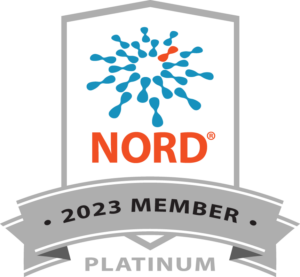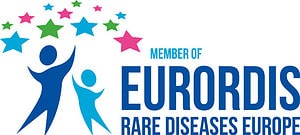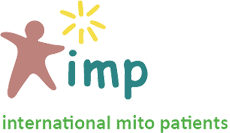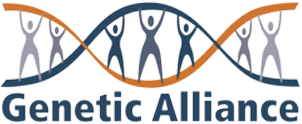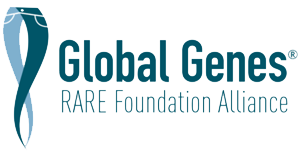General Info for Barth Syndrome
Overview
Barth syndrome is a rare mitochondrial condition where a protein on the mitochondrial membrane doesn’t work as well as it should, resulting in immature cardiolipin production. Cardiolipin is important for the structure and organization of the mitochondria as well as cell death. Mitochondria are parts of a cell that help turn the energy we get from food into energy that the body can use. They are also important in the communication between body parts and creating other materials the body needs. Mitochondrial conditions can cause a variety of signs and symptoms in many parts of the body, particularly those that use a lot of energy like muscles and the brain.
Alternative Names
- LIC
- Lethal Infantile Cardiomyopathy
- BTHS
- 3-methylglutaconic aciduria type 2
- 3 methylglutaconic aciduria, type II
- MGA type 2
- MGA type II
Quick Facts
- Rare mitochondrial condition
- Caused by a change in the gene TAZ.
- An X-linked recessive condition.
- Found in 1:300,000 to 1:400,00 in the United States
- Primarily affects males.
- As of 2022 there is no FDA-approved therapy
Genetics
Affected Genes
TAZ
Inheritance Type(s)
- X-linked recessive
Cause and Genetics
Barth syndrome is an inherited genetic condition, meaning it is passed down in a family. Barth syndrome is caused by changes called mutations or variants in the gene TAZ. Barth syndrome is an X-linked recessive condition.
Women typically have two X chromosomes, whereas men typically have one X chromosome and one Y chromosome. X-linked recessive conditions happen when there is a change in a gene on the X chromosome. Since men typically only have one X chromosome, X-linked conditions typically affect men more. Barth syndrome primarily affects males.
If a woman is a carrier for Barth syndrome, meaning she has a genetic change in one copy of her X chromosome, there is a 50/50 chance with each pregnancy that she will pass the non-working copy to her child. If the child is a boy, he will have Barth syndrome. If the child is a girl, she will likely be a carrier, though some rare cases of women having signs/symptoms of Barth syndrome have been reported.
Frequency
Frequency (USA)
1:300,000 to 1:400,00
Frequency - More Information
Barth syndrome is very rare. A 2020 review found approximately 230-250 males with Barth syndrome worldwide. The prevalence estimates differ depending on location.
Affected Biological Gender
Male
Affected Biological Gender - More Information
Barth syndrome primarily affects males. Some rare cases of women having signs/symptoms of Barth syndrome have been reported.
Signs and Symptoms of Barth Syndrome
Barth syndrome can cause a range of signs and symptoms. These may differ greatly, even among members of the same family, so always check with your provider if new symptoms appear or you are concerned.
Signs and symptoms of Barth syndrome may include:
- An enlarged heart (cardiomyopathy), congestive heart failure and/or heart rhythm differences
- Low white blood cells (neutropenia)
- Underdeveloped skeletal muscles with muscle weakness and exercise intolerance
- Gross motor delay
- Growth delay and short stature through the pre-teen years followed by accelerated growth in mid-to-late puberty
- Life-threatening bacterial infections
- Extreme tiredness (fatigue)
- GI concerns like diarrhea and/or constipation, abdominal pain and feeding problems (difficulty sucking, swallowing and/or chewing, aversion to some food textures, selective or picky eating)
- Blood clots (thrombosis)
- Low blood sugar (hypoglycemia) especially after fasting
- Body aches (especially during puberty)
- Bone weakness (osteoporosis)
- Mild learning differences
Individuals living with Barth syndrome typically have similar facial features when they are young including a round face with a noticeable or prominent chin and full cheeks. Ears are usually large, and eyes are deep set. However, the facial features become less noticeable with age. In adolescence and adulthood there is a characteristic distribution of fat on the hips, thighs and chest.
Diagnosis
Barth syndrome can be diagnosed by:
- Measuring biochemical markers in blood and urine
- Heart studies looking for structural differences and/or rhythm changes (Echocardiogram, EKG)
- Careful physical examination and growth measurements
- Performing a genetic test to look for changes in genes known to cause Barth syndrome
Newborn Screening: Recommended Uniform Screening Panel (RUSP)
No
Newborn Screening - More Information
Treatment of Barth Syndrome
Treatment and Management
There is currently no FDA-approved therapy for Barth syndrome.
Treatment and management of Barth syndrome is symptomatic and supportive. This may include:
- Traditional treatment of heart conditions with heart transplant when indicated
- Prophylactic antibiotics to treat infections
- Careful monitoring of swallowing ability and airways
- Bone monitoring for scoliosis and osteoporosis
- Nutrition support with feeding support and gastrostomy tube if required. Avoidance of fasting with cornstarch supplementation before bedtime.
- Physical therapy and occupational therapy
- Avoidance of mitochondrial toxins like certain drugs, tobacco and alcohol
- Mitochondrial supplements
- Special schooling arrangements
Type of Specialists and Clinicians
- Cardiology
- Endocrinology
- Gastroenterology
- Hematology
- Neurology
- Nutritionist
- Other
- Physical and occupational therapy
- Specialists to treat bacterial infections
Resources
- About Barth Syndrome – The National Institutes of Health
- Barth Syndrome – NORD (National Organization for Rare Disorders)
- Barth Syndrome – Barth Syndrome Foundation
- Barth syndrome – ThinkGenetic, Inc.
Connecting with others impacted by a rare disease allows for vital information to be shared about day-to-day life, prevents isolation, and gives hope. Please contact MitoAction for peer support opportunities at 888-MITO-411 or email mito411@mitoaction.org.
Other resources we recommend are:
Download the Barth Syndrome Fact Sheet (PDF)
MitoAction does not provide medical advice, diagnosis, treatment, or legal advice. It is essential that all those living with or caring for someone with a Mitochondrial or FAOD disease have an emergency protocol letter. These letters, which are written and signed by a doctor, share details about prescribed treatment during crises and in emergency room settings. Always check with your doctor if you or your child has concerns as everyone may present with symptoms differently. Before beginning any treatment or therapy, please consult with your physician.
Last Updated: 11/15/2022



